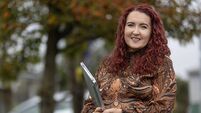The Secret Cyclist: The Government is putting too many eggs in the Greenway basket

Alan and Lisa Ruttle with their children Sarah, Emma Noreen and Will on the newly renovated Limerick Greenway. Many Greenways ‘openings’ of late have been upgrades and rebrands or opened in small sections. Picture: Seán Curtin, True Media.
Last year, I was one of hundreds of thousands of people to cycle along a greenway on this island. Most of us did so as tourists and we brought immense benefits to local economies. The Great Western Greenway for example is worth €38m locally and supports 200 direct jobs.
Greenways can be both a great day out or part of an active weekend break. Nearly everyone who can cycle a bike feels safe on a greenway and they are a great way for new and less experienced cyclists to enjoy cycling.

Celebrating 25 years of health and wellbeing








